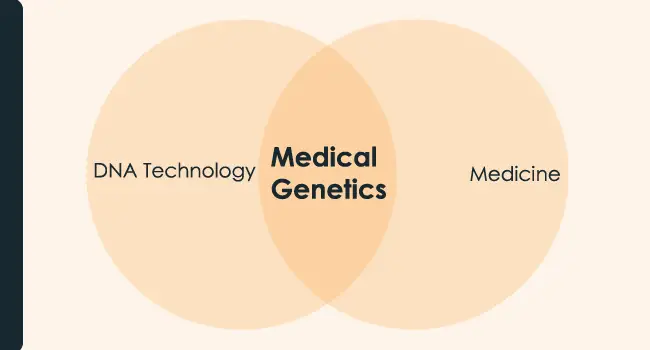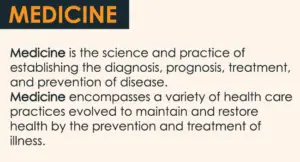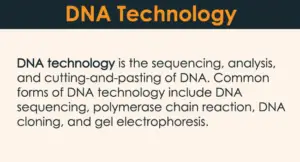
Which Career Combines DNA Technology and Medicine?
Which Career Combines DNA Technology and Medicine? is a very rare question that people ask because this relates to a very unique and descent interest in the market which is biology.
read: PCR or Polymerase Chain Reaction and applications
The career that combines DNA technology and Medicine is Pharmaceuticals/medical genetics. Yes, this is the specific biology field that amalgamates these two sub biology fields.
Let’s get more into detail of all these types to get better insights on what these careers are and how they unite by a third career.
Let’s discuss DNA Technology so far and so on.
What is Medicine?
Medicine is a health field that incorporates doctors, nurses, and many other professionals. It deals with medical complications, treatment, preventives, and many other health aspects.
It goals to encourage and maintain health and wellness. the ordinary latest medicines is sometimes familiarised with the name allopathic. it includes the drug or surgery utilization, often keep-up by guidance and lifestyle.

What is Medicine
- Toxicology: the study that deals with poisons, what is their chemical structure or what they are and how they are capable to impact the body, a toxicologist study, and detect poison.
- Radiology: the study that deals with high energy radiation and such as X-rays, particularly the utilization of such radiation is considered in disease treatment or detection.
- Pharmacology: the medicinal branch that deals with the medication and drug action study.
- Pathology: pathology means the study of disease/complication, it is the study that deals with the injury or complication, as we see in pathology labs.
- Nutrition: the study of science that deals with the nutrients and nutritional facts specifically in humans.
- Neuroscience: the field that deals with the nervous system. It is a kind of broad field that combines human anatomy, molecular biology, physiology, cytology, and developmental biology.
- Microbiology: it deals with the study and research of microorganisms including multicellular and unicellular as well, it also includes some sub-branches for instance, virology, bacteriology, parasitology, immunology, mycology, and protistology.
- Histology: the branch of biology that deals with the cells and normal tissues, i.e. handle the anatomy microscopic. It studies the organic tissues of animals and plants in their microscopic aspects: characteristics, composition, structure, and function.
- Genetics: the branch of biology that deals with genes and inheritance. It studies how hereditary characters are transmitted from generation to generation.
- Epidemiology: the branch of biology that studies the patterns, causes, and control of diseases in groups of people. It studies epidemics, that is, it is the science that studies the phenomenon of the spread of diseases that affect societies in an expansive way in the framework of a cycle of time.
- Endocrinology: the branch of medicine that is responsible for the study, treatment, and prevention of various disorders affecting the endocrine or hormonal system. It is the specialty of medicine dedicated to studying the ductless glands.
- Embryology: a branch that deals with the study, formation, and development of embryos. In short, it specializes in everything related to the embryo. Its objective of the study is embryogenesis.
- Cytology: as its name suggests, is the study of cells, that is, their morphology, using an optical microscope. It is also called cell biology or cell biochemistry, has the cell as its object of study.
- Biophysics: a sub-discipline of biology that studies the physical principles underlying all processes of living systems. In other words, it is the physics of biology. It is a reductionist science because it states that all phenomena observed in nature have a predictable scientific explanation.
- Biostatistics: the mathematical science in which biological or health data are obtained and analyzed using statistical methods. It is a scientific discipline that is responsible for the application of statistical analysis to different issues related to biology.
- Biomechanics: a scientific discipline that studies the movement of the body in its different circumstances, that is, this science tries to analyze the activity of the human being and the response that our body has to this.
- Anatomy: the study that deals with the physical body structure.
- Biochemistry: a science that studies the characteristics, structure, organization, and functions of the chemical components of living beings at the molecular level.
What is DNA Technology?

DNA technology is a transformed contemporary technology. DNA is the genetic hub of an organism and is able to inherit/transfer from progeny to progeny. There is a huge knowledge that has been revealed by DNA about evolution, aging, disease, and human behavior.
There are many advancements that happened in DNA technology and that can be observed in the form of various other techniques exist, for instance: DNA microarray technology, cloning, DNA fingerprinting, PCR, DNA profiling, and recombinant DNA technology.
In the era around 1955, the DNA structural arrangements & construction was concluded figuring that DNA is a genetic pool and this genetic material is made to pass on generations ahead. The Polymerase Chain Reaction then took no longer to be revealed after such DNA clarification. It was considered most of the important technique and also got the Nobel Award.
Polymerase Chain Reaction is the intensification of a particular DNA sequence so that it can be scrutinized by researchers.
Amplification is a significant factor, expressly when it is essential to investigate a scanty DNA sequence in bulk to accomplish other molecular analyses like sequencing of DNA.
Also, it took no longer for genetic engineering to pop up just after the PCR determined which got a massive name because of the recombinant DNA technology in which DNA has been modified utilizing derived bacterial enzymes which are known as restriction endonucleases that behave just as the same as DNA cutters or scissors. The portion that it cuts can be paired to another cut portion by the same enzyme from a distinct DNA progression. The adhesive edges that are created a bond to each other and a DNA progression can therefore be embedded/implanted into another progression/series of DNA.
Restriction endonucleases (RE) are also much significant in the modern technique of genetic fingerprinting. In this event enzymes/proteins that identify particular DNA sequences can manufacture DNA fragments by cutting distinct chunks from long DNA strands.
In the case there are distinctions among the inherited DNA progression, it straightly means that there are additional specific progressions changed like restriction proteins no more detect the site, the fickle pattern can be manufactured.
In this case, these models are utilized to examine two distinct individuals. they will have a distinct fragment fingerprint or pattern. Genetic fingerprinting can be utilized to inquire about paternity. Forensics includes genetic fingerprinting that can be utilized to figure out wicked centric. This technique additionally permits scientists to manufacture chromosomal genetic maps based on restriction protein fingerprints.
Recombinant DNA technology also be utilized to perform gene splicing in the molecular related devices that can convey such genes to certain cellular spots. The technology has additionally known as gene therapy that has been considered to convey genes into individuals that have a faulty gene which may cause complications. Gene Splicing technique has also been applied to environmental applications. Certain bacteria have been genetically mutated to manufacture proteins that lyse harmful toxins like DDT.
GMO (genetically modified organisms) like crops and plants been manufactured to yield substances that halt insects. Likewise, fruits can also be modified to possess genes that manufacture proteins that sluggish ripening process with the goal to prolong shelf length. The industry keeps going to broaden the number of GM crop categories, despite i the face of tenacious affairs aloft the catastrophic extent of the genetically defined trait to intended plants such as weeds.
The technique DNA microarray also familiarized with the name DNA chip, is the most advanced latest nano-technique that permits scientists to possess the capability to analyze the genome in a high output fashion
The DNA microarray technology, also known as the DNA chip, is the latest in the nanotechnology domain that allows researchers to have the ability to study the genome in a high throughput manner.
It can be utilized for gene character profiling which delivers researchers perspicacity about what actually genes are being regulated down or up. Certain hereditary profiling can be figured in order to estimate cancer peril or to figure markers that may be disease connected.
It owns the capability solely to mark mutations in the gene appearance that is big sufficient to be marked beyond the baseline level.
Therefore, it doesn’t mark fine gene mutation in gene appearance that might cause complications or execute a part in the complication development. it could also be utilized specifically for genotyping. Even though clinical genotyping for diagnosis utilizing the microarray technique is still going under investigation.
Genes that are from various other species can also be considered to put on the latest traits to a specific organism. For instance, plants, and mice have all luminous genes from jellyfish added to their genome.
The other cause for embedding genes into a foreign organism is to yield certain pharmaceutical and nutritional stuff.
Some cows also have been modified so they can yield vitamins and insulin within lactation. Similarly, pigs have been modified to control the transplantation issues so some limited transplantation of organ can be conveyed out from pigs to humans, which is known as xenotransplantation
DNA technology solely when applied to regenerative medicines and edibles, keeps on generating controversy. it will likely carry on to be a huge part of public wrangle and have an impact on each diagnostic aspect, genetic profiling, forensics, and therapeutics.
Have a look at the video of DNA technology applications:
once again recalling you.
Which Career Combines DNA Technology and Medicine? The career that merges DNA technology and Medicine is Pharmaceuticals/medical genetics. Yes, this is the specific biology field that merges these two sub biology fields.
Conclusion (Which Career Combines DNA Technology and Medicine?)
We can conclude that which career combines DNA technology and medicine and that is medical genetics/pharmaceuticals. Both are in actual same fields just a name difference they have like we call bioinformatics a medical technology or computational biology.
Medical Genetics is the career that best suits to be a combiner of medicine and DNA technology. It deals with the detection of the treatment of hereditary ailments. Other medical complications that MG deals with are skeletal dysplasia, cancer, autism, and parental diagnosis.
You may also enjoy reading: